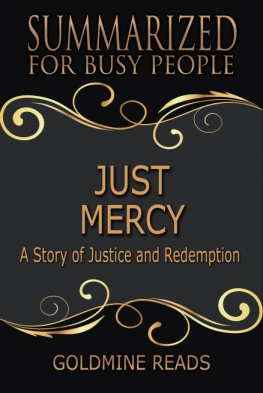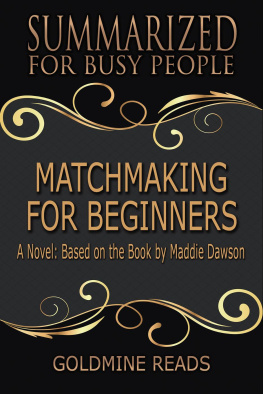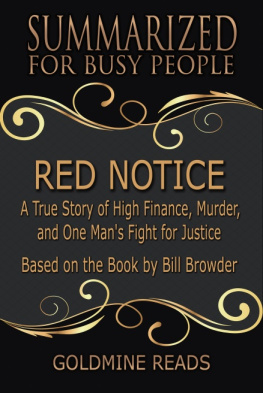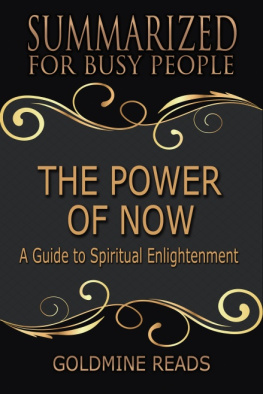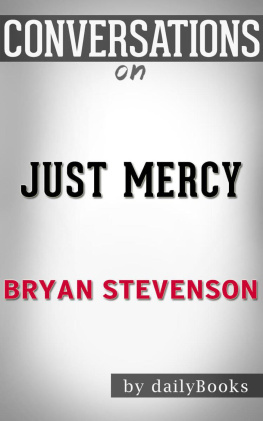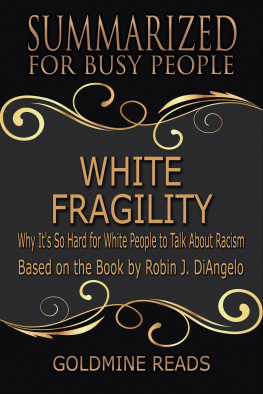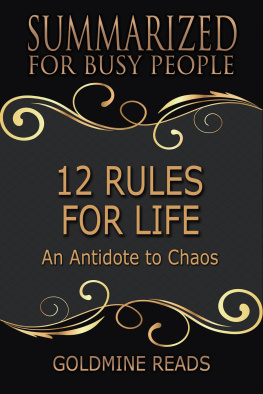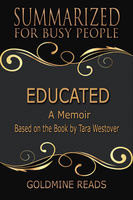JUST MERCY
Summarized For Busy People
Based on the Book by Bryan Stevenson
Goldmine Reads
Copyright Goldmine Reads
All Rights reserved. No part of this text may be reproduced, stored in a retrieval system, or transmitted, in any form or by any means, without the prior permission in writing of the copyright holder.
Under no circumstances will any legal responsibility or blame be held against the publisher for any reparation, damages, or monetary loss due to the information herein, either directly or indirectly.
Respective authors own all copyrights not held by the publisher.
TABLE OF CONTENT
BOOK OVERVIEW
Just Mercy is created in order to show whats behind corporal punishment and the culture of mass incarceration in America. It places an emphasis on the imprisonment rate in America especially on its poor and African American populations as well as the consequences and costs of mass incarceration. Stevenson sheds light on the irresponsible, unfair, and biased prosecution of impoverished populations and the ripple effect it has on families, communities, and America.
ABOUT THE AUTHOR
Bryan Stevenson is the executive director of the Equal Justice Initiative and a professor of law at New York University Law School. He was able to win cases and relief for condemned prisoners, argued before the Supreme Court, and won national accolades for his mission in challenging bias against the poor and people of color. He has received several awards including the MacArthur Foundation Genius Grant.
ABOUT THIS BOOK SUMMARY
This book summary serves as a guide to Bryan Stevensons Just Mercy. No text of the actual book is included, so if you prefer, you may purchase a copy before you proceed.
This guide includes a summary of Stevensons personal and factual account about the U.S. justice system where he emphasizes his purpose of achieving true justice for those who are beyond the reach of the legal system from the wrongfully condemned to the women and children.
INTRODUCTION: Higher Ground
Bryan Stevenson was a young law student who just graduated from college with a Bachelors degree in Philosophy. With no known path, he struggled to decide what he wanted to do. He had been inspired by righting social wrongs and righting racial inequality and injusticeand because of this, Stevenson enrolled into Harvard law school.
His classes had proven to be uninspiring until he encountered a one-month course on Race and Poverty Litigation. This course enabled Stevenson to work directly with the Southern Prisoners Defense Committee (SPDC), an organization based in Atlanta whose goal is to represent and defend accused prisoners on death row who dont have access to proper legal defense.
As an intern, he met a condemned death row prisoner for the first time. This emotional conversation sparked his passion to seek justice for those who were judged unfairly by the American Judicial System.
CHAPTER 1: Mockingbird Players
Stevenson was introduced to the Walter McMillian case once he was hired fulltime at SPDC. This is simply one of many in Alabama which are the state with the fastest growing condemned population with the lowest rate of legal representation.
Walter was from Monroeville, Alabama which is a town with a long African American slavery history and had persisted into modern-day poverty in the black community. Walter had built a modest life as the owner of his business, an achievement that won him respect throughout the community. However, others have been wrought with suspicion and jealousy. Walter ended up in court after an affair with a local white woman and the spotlight on him had caused him more danger.
Racial integrity laws have then defined interracial relationships as unlawfulwhich could result in the breeding of a mongrel population and a degraded civilization. This law had persisted throughout the times despite the U.S. Supreme Courts repeal in 1967 which have been called anti-miscegenation statuses.
When a young white girl was found brutally murdered in Monroeville, there had been the public pressure to solve this homicide and all eyes fell on Waltermaking him the potential suspect.
CHAPTER 2: Stand
In the eighties, there had been an increase in prison populations which caused the conditions and inmate abuse to worsen. Stevenson struggled to manage his caseload even as reports of neglect, racially motivated abuse, and misconduct piled on his desk.
Stevenson was pulled over one night, upon returning to his apartment in Midtown, Atlanta. The Atlanta police detained and illegally searched him while held at gunpoint in front of his home. They claimed to respond to a burglary after finding nothing on him. This kind of racial profiling was marked in the young lawyers mind and wondered how many young black men experienced the same thing on a daily basis.
He was approached by an older black man who had scars all over his head and face after speaking in a church congregation in Alabama. He told Stevenson that the marks he had were caused by fighting for racial equality and that Stevenson had to continue beating the drum for justice. This conversation motivated him to open a law office in Alabama, the southern epicenter of racial injustice.
CHAPTER 3: Trials and Tribulation
On June 1987, Walter McMillian was arrested for a fabricated charge of sodomy on another man. The local police convinced a drug addict to point McMillian for the sodomy because of their desire to blame someone for the murder of the young white girl. The investigators then built a murder case against McMillian.
The police relied on an insubstantial testimony of a convicted drug addict and well-regarded jailhouse snitch to convict Walter. They gradually became more frustrated and aggressive because of the surmounting evidence suggesting Walters innocence, he was constantly attacked with racial slurs and threats of lynching from police officers. Walter and his accusers were moved illegally to the death row confinement wing at Holman Correctional Facility which was a maximum-security corridor placed close to the prisons infamous electric chair.
Walter slowly fell into despair while in detention on death rowfeeling confused, angry, and scared. He had been urged to file appeals and lawsuits, but he didnt know how to do it because he was nearly illiterate. His family also had trouble raising money to hire a good lawyer to help them, causing them to only rely on local law enforcement.
There had been a practice of excluding African Americans from juries in southern courts well until 1986, despite it being deemed unconstitutional as early as 1880. The Supreme Court legislation that threatens this southern practice is only gaining momentum today. The 1986 case of Batson vs. Kentucky was finally able to assign a more direct language to the exclusion of African Americans from juries which gave hope to Walters case.
Walters defense was able to file a motion to move his trial to a neighboring county to which the DA surprisingly agreed and assigned them to a conservative Baldwin countythis was a leniency that was almost never granted in Alabama courts. Baldwin was the only majority-white county bordering Monroe and the trial dates were set for August 1988. At that time, Walter had been on death row without a conviction for over a year.
The trial didnt last long. Despite the weak evidence from the obviously coerced witnesses and strong evidence of McMillians whereabouts on the day of the murder, the nearly all-white jury convicted Walter McMillian guilty of capital murder after convening for three hours.
CHAPTER 4: The Old Rugged Cross
Once Stevenson was able to open his new nonprofit law center in Montgomery, the Equal Justice Initiative (EJI) became flooded with scarce funds, federal red tape bureaucracy, and expedited death row cases as the tension doubled throughout 1989.

